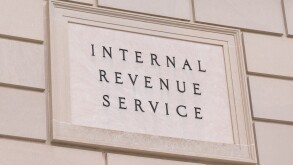The New Zealand Inland Revenue issued Interpretation Statement: Tax Avoidance and the interpretation of the general anti-avoidance provisions sections BG 1 and GA 1 of the Income Tax Act 2007 (the ‘Interpretation Statement’) on February 3 2023.
The Interpretation Statement sets out the Commissioner of Inland Revenue's (the ‘Commissioner’s’) view on how New Zealand's general anti-avoidance rule (GAAR) applies and replaces the previous interpretation statement that was issued in 2013. Of relevance to the updated Interpretation Statement is the Supreme Court's decision in Frucor delivered in September 2022.
The GAAR
The GAAR provides that a tax avoidance arrangement is void as against the Commissioner and that the Commissioner may counteract a tax advantage obtained from or under a tax avoidance arrangement. A tax avoidance arrangement has tax avoidance as its sole purpose or effect, or if it has more than one purpose or effect, tax avoidance is more than merely incidental to any other purpose or effect.
In determining whether an arrangement has the purpose or effect of tax avoidance, the ‘Parliamentary contemplation test’ as set out in the Supreme Court case Ben Nevis has been adopted as the authoritative approach by New Zealand's courts, including by the Supreme Court in Frucor.
The Commissioner's approach to the GAAR
The Interpretation Statement sets out the Commissioner's approach to applying the GAAR in detail, which can be summarised as the following steps:
Understanding the legal form of the arrangement;
Ascertaining Parliament's purpose for the specific provisions involved;
Understanding the commercial and economic reality of the arrangement as a whole;
Considering whether the arrangement makes use of, or circumvents, the specific provisions in a manner consistent with Parliament's purpose;
Deciding whether there is a tax avoidance purpose or effect; and
If tax avoidance is not the sole purpose or effect of the arrangement, whether the tax avoidance purpose or effect is merely incidental.
Supreme Court decision in Frucor
In September 2022, the Supreme Court delivered its decision in Frucor, under which the Commissioner was successful in arguing that the GAAR applied to a cross-border financing structure on the basis of interest deductions being claimed in excess of the economic funding cost under the structure.
While the Frucor decision adopted and applied the Parliamentary contemplation test as set out in Ben Nevis, the approach of the Supreme Court majority could be considered to have applied a broader economic substance test, with much emphasis placed on the impression the structure gave.
The Interpretation Statement, while generally following the same thrust as the previous version, reflects the approach in Frucor and provides that the Commissioner's approach also places greater emphasis on the economic substance of arrangements.
Practical considerations
The Interpretation Statement is not technically binding on the Commissioner; however, from a practical perspective, it is of use to taxpayers as a risk analysis tool because it provides an updated statement as to the Commissioner's approach to the GAAR.
Although not addressed in the Interpretation Statement, also of relevance to taxpayers is the liberal approach to the imposition of shortfall penalties by the Supreme Court in Frucor, which may necessitate an increased threshold for taxpayer certainty as to the GAAR's application before implementing structures.
As a result, a continuing trend of caution is expected from businesses when engaging in structuring and considering the potential application of the GAAR, with likely continued reliance on the ability to obtain binding rulings from Inland Revenue before implementing structures.













